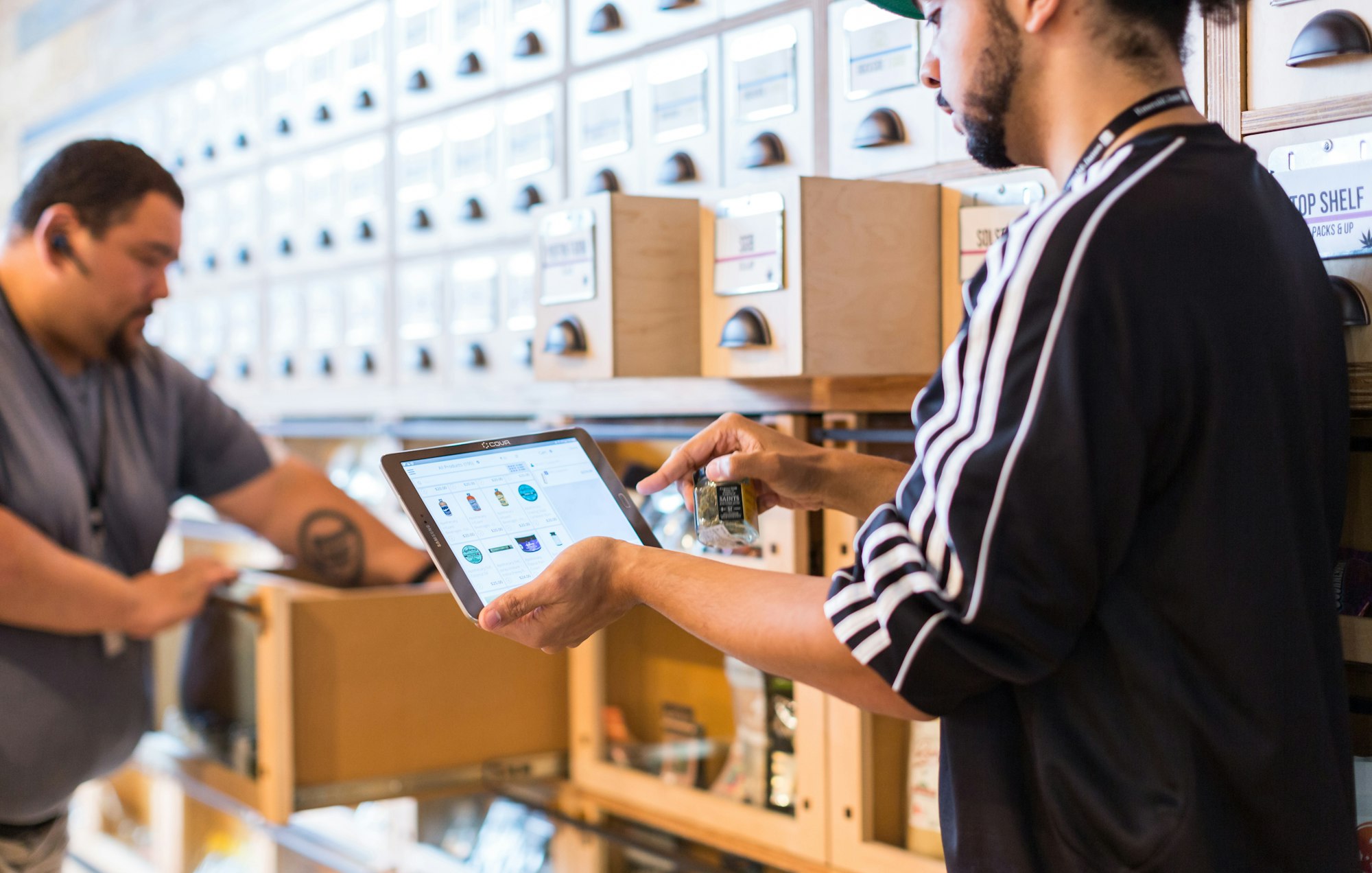Order Management for eCommerce
Efficient order management is crucial to the success of any online business. It’s also essential to providing excellent customer services. When you’re able to fulfil orders in an accurate and speedy way, your customers will be happy. This is no easy task, and the fulfilment process can easily spin out of control.
When a company’s order fulfilment process becomes overly complex, staff members will soon become overwhelmed and start to lose track of everything that’s going on. Orders will soon pile up resulting in delays, fulfilment errors, and dissatisfied customers. And the complexity of the order fulfilment process multiplies with every sales channel and distribution centre you add to your network.
This is why you need the right technology tools to take charge of these processes on your behalf. The software needs to simplify the most complex fulfilment tasks and reduce multiple processes and systems into a single interface. This will increase productivity and business efficiency.

Order Management for an Online Company
What does order management entail in the context of eCommerce? Simply put, it’s the whole process of keeping track of an order from the moment the customer clicks the "buy" button, through every step of the fulfilment process, until the point the physical product arrives at their doorstep.
It's important that the order be tracked through its entire lifecycle, to make sure that every order is fulfilled in the most efficient way possible.Through the whole process and at every step along the way, the system records data. It’s the efficient handling of this data that becomes the key to successful order management—and where technology can play the biggest role in streamlining this process.
There are three steps to ensuring that your eCommerce order management is operating at optimum:
- First you need to consolidate your inventory data into a single platform.
- Then you have to automate repetitive tasks to reduce cost and eliminate human errors.
- Then finally, you have to optimise your fulfilment process until it runs like a well-oiled machine.
This is where an Order Management Solution (OMS) becomes invaluable for any online retailer. It will streamline and automate your various order fulfilment and inventory management services to remove some of the complexity and reduce human error.

Features of an Effective OMS
When an OMS runs as intended, it should take charge of all the tasks required to initiate, monitor, track, and control the order fulfilment process. This means that an OMS should, at the very least, be able to manage the following functions:
- Communicating with Customers
- Registering and tracking sales originating from multiple channels
- Keeping track of inventory and the rest of the supply chain
- Coordinating in-house logistics with third-party logistics (3PL)
- Providing customer service during the order fulfilment process and after the package has been delivered.
When an OMS works well, it is able to streamline every aspect of the order management process and simplify the fulfilment process. All the while, the system will update your inventory levels in real time without manual intervention.
This is especially useful in the online retail sector. Since your website is online 24/7 and is potentially generating sales at all hours of the day, you want to automate your inventory management tasks so that your customers always get accurate information with regards to stock levels. You don't want to have to delay or cancel orders because a product has been overselled or understocked.

ecommerce">Key Benefits of Using an OMS in eCommerce
Whether you sell to other businesses or direct to consumers, the right OMS will improve your order processing speed and reduce fulfilment and inventory errors. This will make your business run more efficiently, lower the cost of inventory management, and simplify order processing.
There are a number of key benefits to using an OMS if your an eCommerce retailer:
1. Automate Manual Processes
One of the most important advantages of using an OMS is automation. The system is able to automate many of the order fulfilment and warehousing tasks that normally would have to be done by hand. Since several time-consuming manual tasks are taken over by the system, it will increase your company's productivity.
For example, the system will automatically submit new orders to your fulfilment centres, perform order changes, send out invoices, and produce financial reporting in real-time. The system can also automatically identify and sort customers into demographic groupings for targeted marketing campaigns.
The automation is regulated by rules which you can set up and optimized depending on your needs and processes. Different fulfilment rules will kick into operation depending on specific circumstances. The system will automatically process new orders and assign the relevant processing rules to each.
In this way, the system will identify specific scenarios that have to be handled in specific ways—which would have been extremely time-consuming if done manually. Which means the logistics of preparing an order to ship out to customers is much simpler and faster than before.

2. Accommodate Multiple Sales Channels
One of the most important ways that an OMS can increase your eCommerce business productivity, is by managing orders across different sales channels. When all of the fulfilment activity is centralised in a single system, you will have unparalleled visibility into the processing of orders.
When data flows between the different sales channels in your network in a seamless way, you will be able to give your customers individualised service. A customer's personal account information will be unified across all your sales channels and will never get lost. Regardless of which sales channel they use to place an order, their information will always be the same.
Furthermore, all customer information, product detail, pricing, and stock level data will be synchronized between all your channels. This gives you access to up-to-date statistics with regards to order fulfilment, inventory, and customer demographics—with no manual processing required.
3. Limitless Order Volumes
A small or medium-sized business is only able to handle a certain number of orders per day or per month. Because of they have limited staff, they’ve won’t be able to handle large order volumes. This changes when you use an OMS, since it takes over much of the work that previously would have been done manually. This allows you to handle much larger order volumes, even with a small team.
When you use an OMS, you will be able to grow your business and accept a lot more orders without significantly increasing the size of your team. A further benefit is that the OMS will eliminate most of the errors that come with handling high order volumes. The system can be set up to handle orders in previously created configurations, handling orders in bulk. Which means that processing a high volume of orders becomes as simple as handling only a few orders.

4. Real-time Inventory Visibility
An OMS will be able to give you accurate inventory numbers from multiple warehouses and suppliers in one interface. Which means that you will always be able to give customers the correct information with regards to stock levels and whether an item is available for purchase.
Retail ERP systems can only give you a general idea of the amount of stock in inventory. The problem is that these types of systems don't usually provide integration between your point-of-sale system (POS) and your order fulfilment process.
An OMS, on the other hand, can give your real-time inventory figures from all your warehouses. These numbers will also be updated as orders are fulfilled. The system can even be configured to give you inventory levels from your suppliers in real time. Which means you will always have accurate information with regards to how much stock you have available for sale.
5. Predicting Stock Replenishment
An OMS will help you make accurate stock forecasts and help you decide on the correct amount of safety stock you need to keep up with demand. This is because the OMS not only runs the different facets of the order fulfilment process, it's an analytical machine that keeps constant tabs on orders and sales projections. In this way you will have just enough stock on hand to avoid over-ordering and overselling, without the risk of producing deadstock.
Manually forecasting demand is extremely difficult. You have to take several variables into account. Small errors can easily cause massive errors in your predictions. The answer is using an OMS to make forecasts based on hard data. The system is able to reference historical data when predicting upturns or downturns in the market. In this way, your order replenishment schedules can be programmed in the most optimum way possible.

6. Analyse sales data based on people, channels, and products
An OMS will be able to analyse sales data based on specific product lines, sales channels, or customer demographics. Which means you will be able to redirect your marketing efforts in an intelligent way to make your sales targets. Some OMS systems even provide advanced tools like retail reporting analytics as well as the application of business intelligence.
An OMS analyzes your business performance in real time. Which means that sales data is processed while the business runs. This gives you a live stream of feedback to optimise your business processes and increase performance.
This benefits decision-making on all levels of your business. The analytical data can be displayed as pre-assigned graphs and dashboards. Which means that you will be able to track the performance of your business as it happens. Suddenly, bottlenecks in your system will become clear. You will also be able to focus more closely on the products, channels, outlets, and demographics with the most potential for growth.
7. Integration with Other Systems
An OMS will be able to integrate with many of the other process software packages and eCommerce tools you’re already using in your business. It shouldn’t be necessary to replace all your business software when you adopt an OMS. The right OMS for your business should be able to integrate with the accounting, warehousing, inventory, and customer support systems you already have in place. As an online retailer, your eCommerce platform should also integrate well with your OMS. In this way, your sales and order fulfilment process are aligned, and inventory levels are updated automatically as you receive and fulfil orders. And as your business grows, it becomes crucial to integrate your technology with the technology used by other service providers and supply chain partners.

Choosing the right OMS for your Business
There are several OMS platforms available in the market, each with a specific set of features, operational approach, and drawbacks. So how do you decide on the right one that will cater to your specific needs and market sector? As a general reference, here are a couple of steps you should follow to select an OMS:
- Firstly, evaluate your business needs, both in your current situation, but also taking future growth into account. What order volume would you like to process? How many products and customers would you like to register on the system? How many sales channels, warehouses, and fulfilment options would you like to incorporate? Not every business needs all of the advanced OMS features that major companies use on a daily basis, so you might save some money by going for a lower-tier system.
- Decide on the timeframe within which you wish to adopt your OMS. Which vendors will be able to assist you in implementing their system this time?
- Create a shortlist of vendors based on the features of their products, the amount of integration each product offers with systems you and your supply chain partners already use, as well as the support services they offer. You have to look at the capabilities of each system based on their level of automation, the analytical processing it would be able to accomplish, as well as the possibility of future growth and development for the system.
- When making your decision, it's useful to check out reviews and case studies where a product has been used in the past. Give precedence to case studies for reputable merchants or companies in your market sector and size class.
- Finally, decide on the right OMS based on the information you gathered in the previous steps. You have to balance all the product features with cost considerations, as well as the level of after-sale support the vendors are able to provide.

Conclusion
We all know that technology is crucial to generating sales and in all your marketing efforts. But you also need the right technology tools to handle order fulfilment process behind the scenes once these orders come into your business.
Efficient order management will ensure that every customer receives their goods in the quickest and easiest way possible. With the right OMS solution for your eCommerce business, you will be able to automate the most complex and time-consuming parts of your order fulfilment and inventory management tasks. This will reduce error and increase productivity.
Some systems are also able to integrate all aspects of inventory management into the order fulfilment process, combining everything into a single and logical interface. The goal is to automate all the time-consuming and error prone steps in the order fulfilment process. In this way you will be able to stay ahead of your competition and give your business the best opportunity to grow.